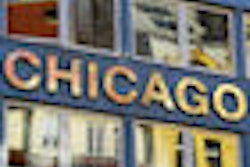Restorations placed with etch-and-rinse adhesives had tighter margins than restorations placed with single-bottle self-etch adhesives in a study published online January 5 in Clinical Oral Investigations.
Many new self-etch adhesives have come onto the market recently, noted the researchers from the International University of Catalonia, Spain; the University of Geneva, Switzerland; and the University Center of Barretos, Brazil. In these systems, adhesive, etch, and primer are all contained in one bottle.
Self-etch adhesives have been reported to cause less sensitivity and are simpler to apply.
The researchers wanted to compare the margins of restorations bonded with these adhesives to the margins of restorations bonded with systems in which adhesive, etch, and primer come in two or three separate bottles, known as etch-and-rinse or total etch.
So they divided 40 caries-free extracted human upper molars into five groups and used different adhesives to bond Tetric EvoCeram (Ivoclar Vivadent) restorations to class I and class V cavities they made in the teeth. During preparation and placement of restorations, the researchers pumped horse blood through each tooth to simulate dentinal fluid.
They bonded the first two groups using self-etch adhesives: One Coat 7.0 (Coltène Whaledent) and Xeno V (Dentsply).
They bonded the second two groups using systems in which the etch was in one bottle and the adhesive and primer combined in a second bottle: XP Bond (Dentsply) and Peak LC Bond (Ultradent).
They bonded the fifth group with Optibond FL (Kerr Dental), a three-step system in which the etch, primer, and adhesive all come in separate bottles.
After placing the restorations, the investigators put each tooth into a chewing machine for 10 days.
Finally, they used scanning electron microscopes to examine replicas of the teeth made from impressions before and after stressing them in the chewing machine. They measured the percentage of each margin that was "continuous" -- that is, without discernable space between the tooth and the composite.
Results
The researchers found that none of the restorations had 100% continuous margins, even before loading. But some fared better than others.
In the class I restorations, all the etch-and-rinse adhesives performed similarly to each other, and both the self-etch adhesives performed similarly. But the etch-and-rinse adhesives had significantly better margins than the self-etch adhesives. The highest percentage continuous margin after loading was for Peak LC Bond, 72.5% (± 9.3%), while Xeno V came in lowest, at 23.2% (± 12.9%) (p < 0.05).
Likewise, for the class V restorations, the self-etch adhesives generally didn't make as good margins as the etch-and-rinse ones. Dentin margins tended to be less continuous than enamel margins. The most continuous combined dentin and enamel class V margin was 72.4% (± 7.9%) after loading for Optibon FL, while the lowest in that category was 29.0% (± 10.4%) for One Coat 7.0.
One reason the etch-and-rinse adhesives may be stronger is that self-etch adhesives are more hydrophilic and the water they absorb results in polymer swelling, which can weaken the polymer network, the researchers said.
The question of margins is important, they wrote. "It is obvious that the higher the percentage of continuous margin, the better is the adhesion, thus reflecting the quality of the adhesive technique and increasing reliability."



















